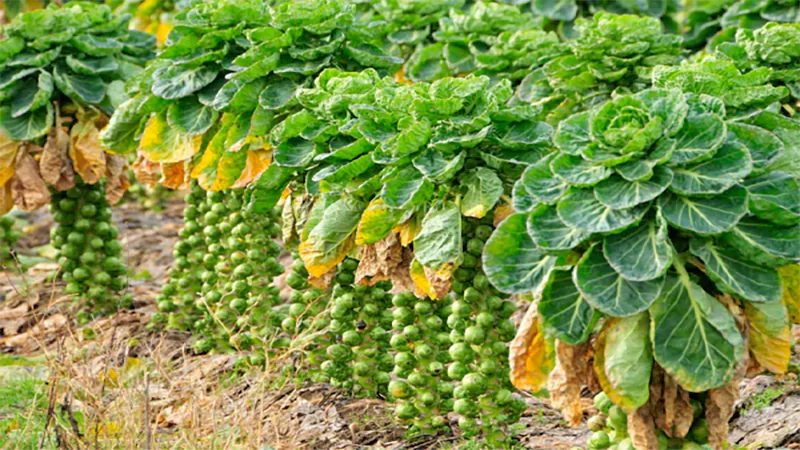Whenever I plan to brighten up a dull corner at my front lawn or balcony garden, Zinnias have been my go-to option. If you are new to horticulture or gardening, you will find this species easy and rewarding to grow. The bold colors and the long-lasting blooms bring so much joy while growing them.
These are fast-growing species and require minimal effort; therefore, novice plant lovers widely appreciate them. Since these can also be grown indoors, if you are looking for smart ways to elevate your home decor, Zinnia plants are an excellent option.
Moving further, jump into this immersive guide without delay and delve into the intricacies of these garden beauties, including their taxonomy and care guide, as well as some of the most popular varieties that are aesthetically pleasing.
Zinnias: Meet the Most Vibrant and Durable Blooms
When I first discovered Zinnias, I was instantly drawn to their bright blooms, only to realize that there is so much more to explore about these flowers apart from their visually appealing appearance. These easy-to-grow annual flowers are highly admired for their striking blooms. What fascinated me more is its origin and the cultural significance it holds across the globe.
Available in a range of colors like white, pink, orange, and yellow, Zinnia tends to be a perfect addition to pollinator gardens. Moving further, let us explore some astonishing features and benefits of the genus.
| Feature | Description |
| Botanical Name | Zinnia elegans |
| Family Name | Annual flowering plant from the Asteraceae family. |
| Origin | Native to Mexico and part of Central America |
| Lifespan | Typically grown as annual flowers |
| Blooming Season | From early summer to late fall |
| Growth Rate | Fast-growing (Completes its lifecycle in one year) |
| Mature Size | 2–4 feet tall and 1–2 feet wide |
As has been aforementioned, apart from being visually appealing, the Zinnia flowers also offer numerous benefits. Being a low-maintenance genus, it is an ideal option for beginner gardeners — no fuss, no drama. If you wish to add vibrancy to your garden within a short period, sowing Zinnia seedlings would be the best solution as these can bloom within 50–70 days.
The Zinnias are renowned for attracting bees, butterflies, and hummingbirds, making them an ideal option for a pollinator garden, therefore supporting the local biodiversity.
Additionally, if you are seeking ways to enhance the aesthetic of your indoor space, Zinnias can be a versatile addition. Its long stems and vibrant petals last very well in a vase.
Historic and Cultural Significance of this Majestic Bloom
The genus was first discovered in the wilds of Mexico and was named after a German botanist, Johann Gottfried Zinn, in the 1700s. Gradually, due to the exceptionally vibrant blooms, the species gained popularity in the early 20th century. It is often believed that the Europeans found the flower attractive and labelled it as “everybody’s flower” because of its common availability.
It was only during the Victorian era that the plant gained popularity because of the emotions that each hue represented. The flowers symbolized lasting affection and remembrance. Even today, it is believed that these blooms represent joy and friendship and are useful for thoughtful gifting.
More than just being some colorful blooms, they carry stories, history, and meaning across cultures. Trust me when I say this: whether you are planting Zinnias as pollinators or simply want to bring a decorative flair, once you grow them, it is difficult not to fall in love with them.
Taxonomic Overview of the Zinnia Plant
Whether you are a seasoned botanist or a garden enthusiast, comprehending the scientific classification of Zinnias or any other flower is important. It helps you learn more about its botanical background and discover if the genus has any special care needs.
| Taxonomic Overview of the Zinnia Plant | |
| Kingdom | Plantae |
| Clade | Tracheophytes |
| Clade | Angiosperms |
| Clade | Eudicots |
| Clade | Asterids |
| Order | Asterales |
| Family | Asteraceae |
| Subfamily | Asteroideae |
| Tribe | Heliantheae |
| Genus | Zinnia |
If you are wondering, “Are Zinnias perennials?” then the answer is no. This genus is an annual flowering plant, which means it completes its life cycle in one year. While some cultivars of the Zinnia plants are perennials, most of them are annual and die during the frost season.
Explore Some Popular Zinnia Varieties
Zinnias are beloved annual flowers, appreciated for their easy growing traits, vibrant hues, and their extended blooming period.
From dwarf varieties to larger ones, there is a Zinnia for everybody out there. Moving further, let us quickly explore some popular Zinnia varieties.
| Cultivar Name | Image | Feature |
| Benary’s Giant Series | 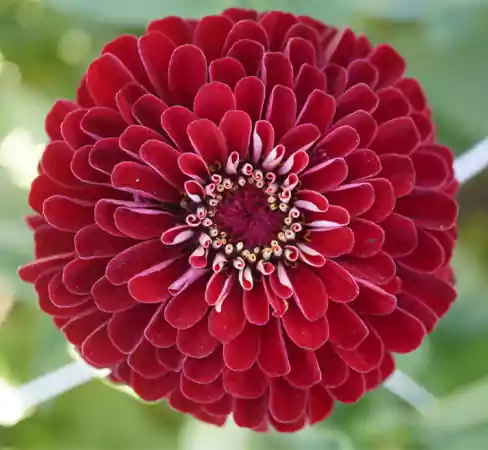 | All the cultivars of this series are considered premium Zinnia plants. They have sturdy stems, and the blooms are almost similar to Dahlia. |
| Queeny Lime Red | 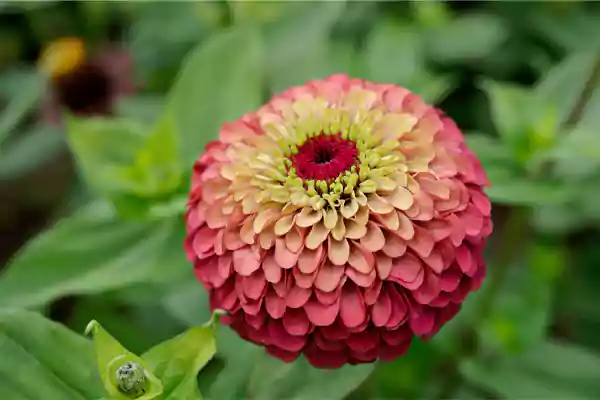 | A popular zinnia variety known for its unique coral-red blooms. It also has subtle lime green hues in the center. |
| Double Zahara Cherry | 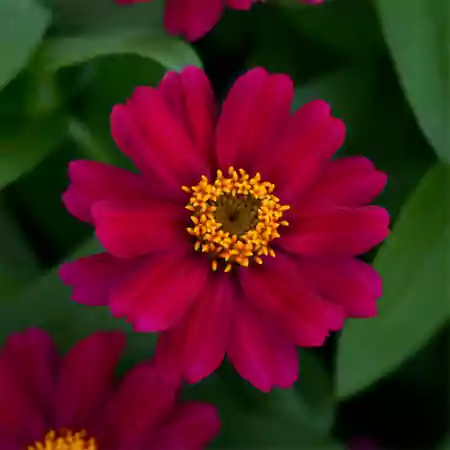 | This particular cultivar blooms with fully double, cherry-red flowers. It is mostly planted to create a contrast in garden areas. |
| Uproar Rose | 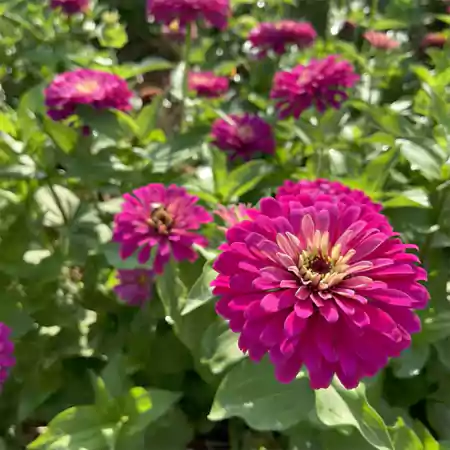 | The flowers of this Zinnia cultivar usually have an ombre effect. It can be used to add height to the garden border areas. |
| Queeny Lime Orange | 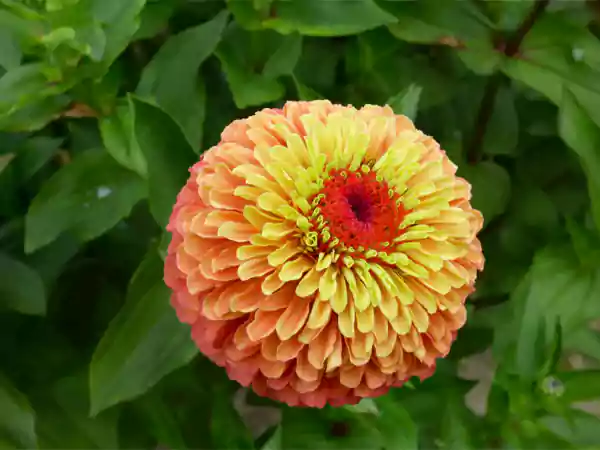 | This is a vibrant annual flower, widely renowned for its color-changing feature. Its bloom lasts up to 3 weeks as cut flowers. |
| Oklahoma Mix | 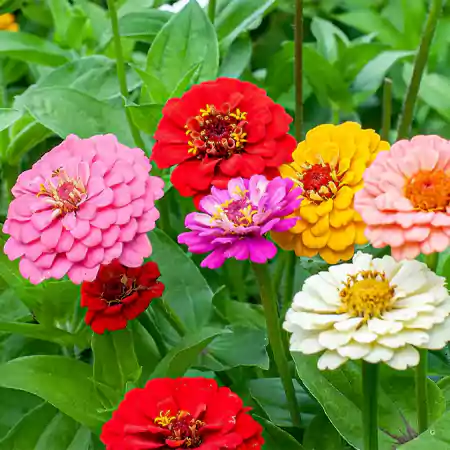 | The Oklahoma Mix is a subspecies of Zinnia Elegans. These are mostly popular for their colorful blooms and sturdy stems. |
| Cactus Flowered’ Mix | 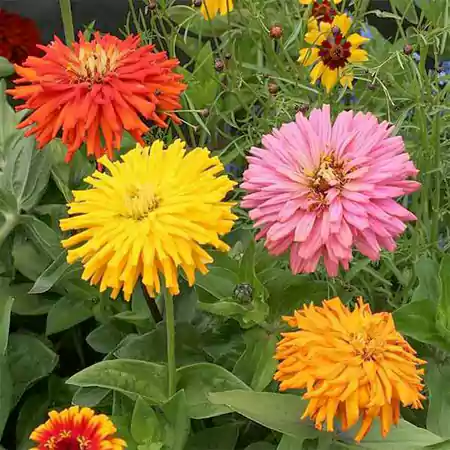 | Unlike the other Zinnia varieties, this genus has rolled petals, which create a spiky cactus-like appearance. |
| Issabellina | 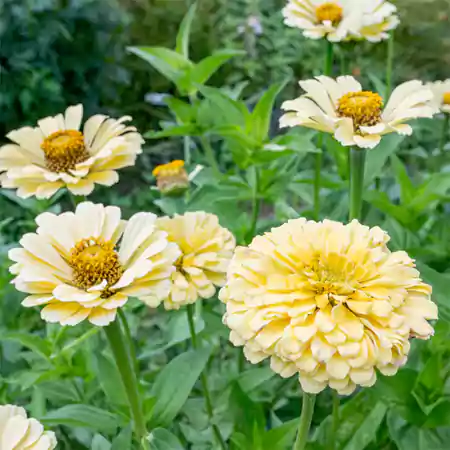 | Known as the excellent cut flower, the Issabellina is a soft cream yellow cultivar of Zinnia. |
| ‘Unicorn’ Mix | 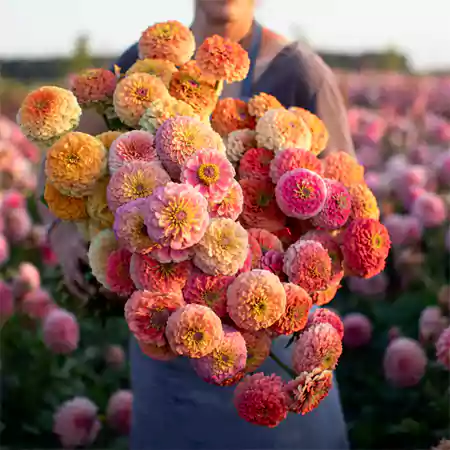 | This species typically bears medium-sized blooms, often in pastel colors such as raspberry, tangerine, magenta, lemon, apricot, and dusty lilac. |
| Jazzy Mix | 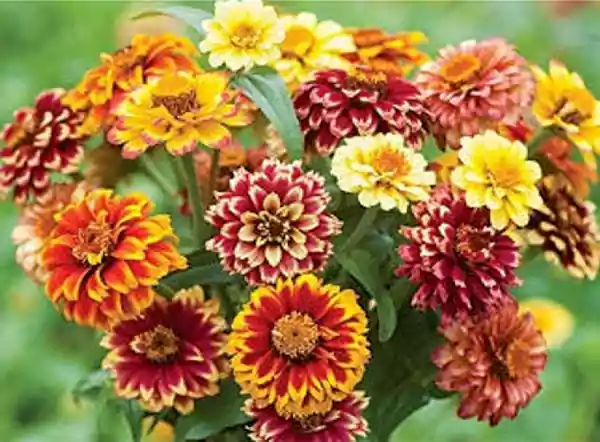 | This is an annual double-blooming species with blooms in a kaleidoscope of colors. |
| Zowie Yellow Flame | 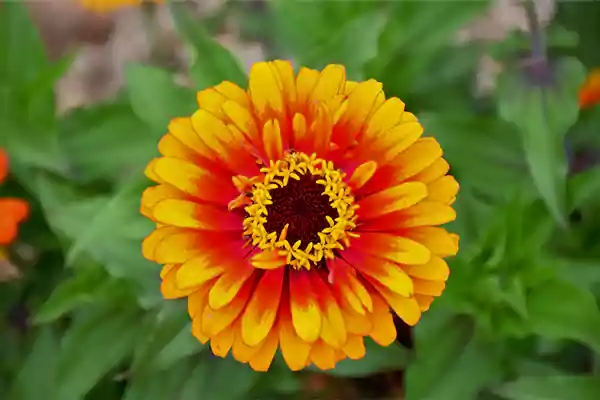 | With semi-double blooms, this flower is visually appealing. The petals are rosy at the center, with bright yellow on the edges. |
| Peppermint Stick’ Mix | 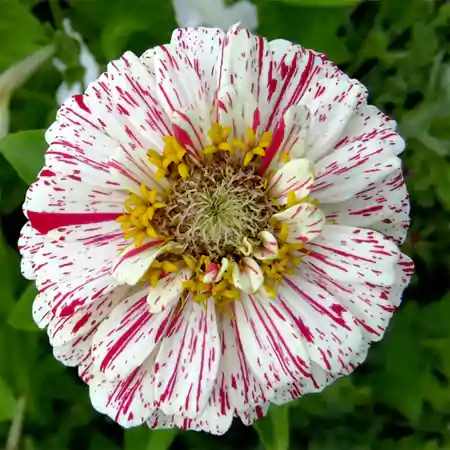 | Each bloom of this cultivar has its unique appearance. The stripes are generally red, and the base of the flower is typically cream, orange, white, or yellow. |
| Holi Scarlet | 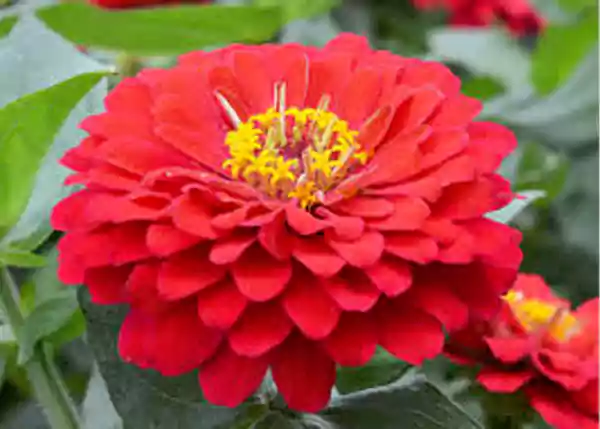 | The compact structure of this beautiful scarlet flower makes it ideal for border edges or even for containers. |
| Polar Bear | 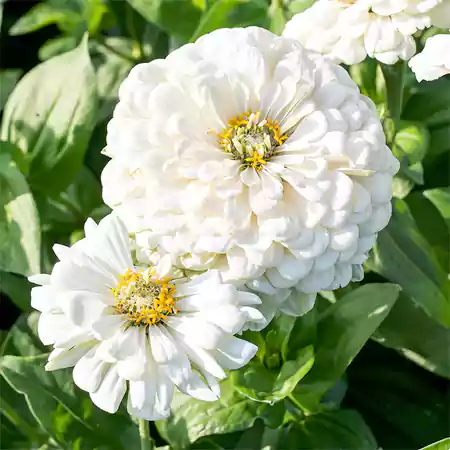 | Widely appreciated as the best white zinnia cultivar, this species stands out in any garden area. |
| Profusion Red Yellow Bicolor | 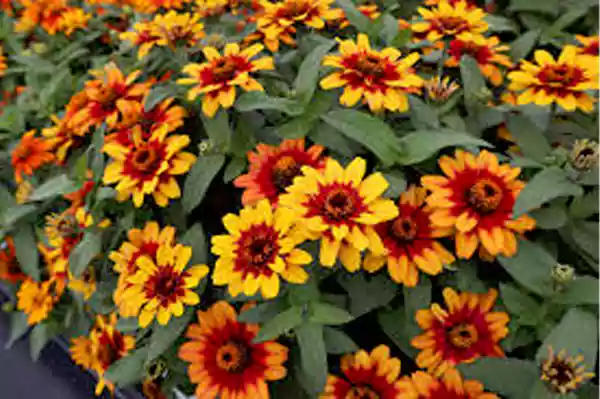 | With a bold red center and bright yellow on the edges, this Zinnia cultivar is breathtaking. |
| Swizzle Series | 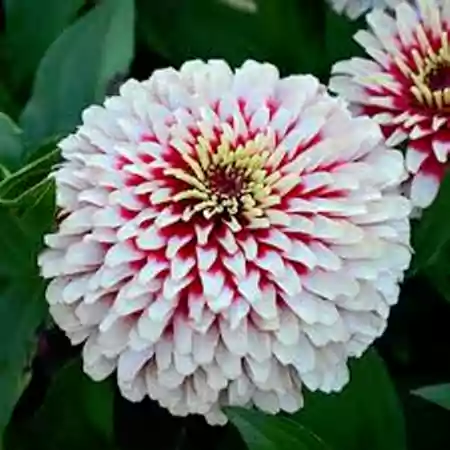 | Very similar to the bicolor one, this series comprises showy, bushy blooms that are relatively low-maintenance. |
| Benary’s Giant Lime | 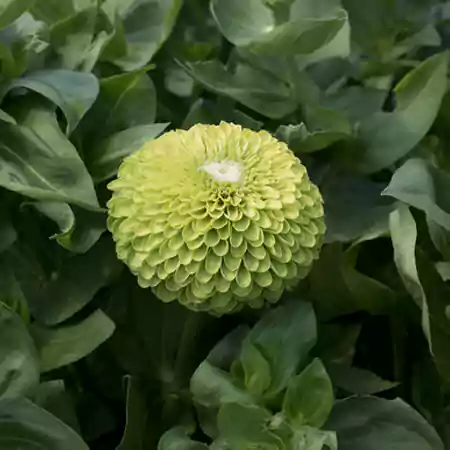 | This cultivar blooms with large, bushy flowers in a lime green hue and is widely used for floral arrangements. |
| Mazurkia | 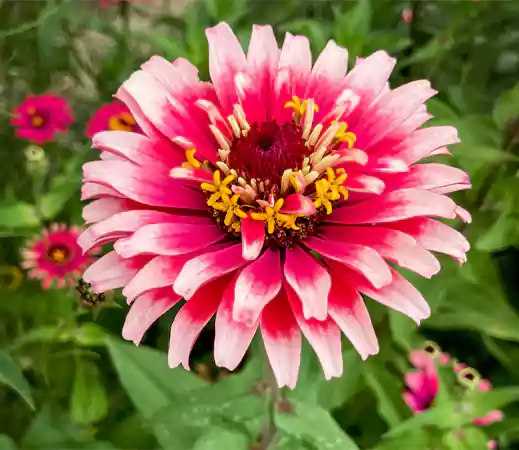 | A popular Zinnia cultivar is mostly used to make bouquets, and is famous among plant lovers for its blush-pink blooms. |
| Sunbow Mix | 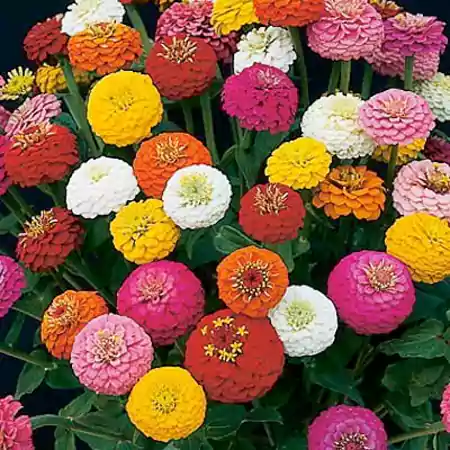 | This genus has the most colorful and eye-catching blooms and is very commonly found across the globe. |
| Magellan Coral | 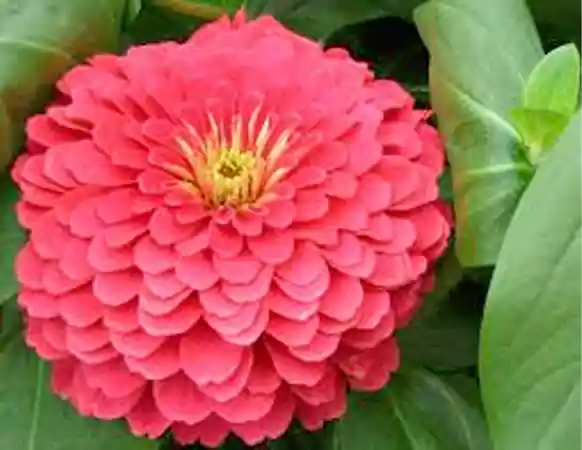 | An annual Zinnia variety is famous among gardeners and botanists for its dahlia-like blooms. |
| Zinderella | 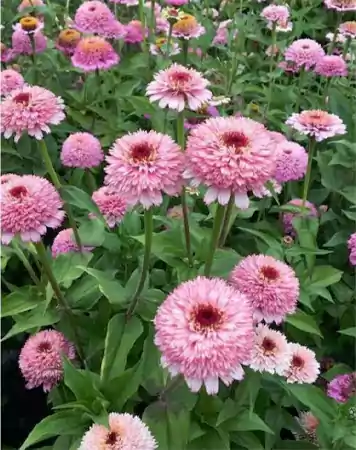 | Known for its unique bushy and pom-pom-like blooms, Zinderella has a dark pink center with pastel color petals. |
From small pops of color to some statement blooms, there is a Zinnia flower for every garden space. Exploring these species allows you to enjoy both elegance and beauty all season long.
No matter how big or small your garden is, these Zinnias will surely enhance the overall look of the landscape.
How to Grow Zinnias? What are the Optimal Growing Conditions?
Mostly, Zinnias are sun-loving flowers, but each cultivar has its own needs. These species are adored by gardeners and plant lovers alike because they can tolerate a variety of climatic conditions.
Since these are fast-growing annual flowers, they require minimal care and are versatile if you are beginning your gardening journey.
Now, if you are still looking for answers on how to plant Zinnias or what the ideal growing conditions are for the genus, you have reached the right space. I have given below an immersive Zinnia care guide for your ease.
| Sunlight Exposure: Since most Zinnia varieties are heliophilous plants, they require a minimum of 6–8 hours of direct sunlight. Try placing them in a shaded area during hot and dry days. They can also thrive in partial shade or filtered sunlight. |
| Water Requirement: Just like any other flower, Zinnias need regular watering during the initial stages of its growth. Once fully mature, they become drought-tolerant. Adjust the frequency of the water and avoid waterlogging to prevent leaf damage. |
| Soil Type: Although these plants are not picky about the pH levels of the soil, they do prefer growing in soil rich with nutrients. Make sure you are sowing the Zinnia seeds in well-permeable and fertile soil. To improve the fertility of the soil, add organic compost at regular intervals. |
| When to Plant Zinnia Seeds: Gardeners and botanists usually prefer planting Zinnias outdoors once the frost has gone and the soil is warm. If you are planning to sow Zinnia plant seeds indoors, plant them 4 to 6 weeks before the expected frost. |
| Fertilizer: A balanced fertilizer in the ratio 10-10-10 can be used. Occasionally, spraying liquid fertilizer can boost the plant’s health. Make sure to add organic compost to the soil before you grow Zinnias. |
Although this genus does not require much pruning, deadheading, or pinching, Zinnia flowers do not harm.
If you spot any leaves turning yellow or notice fungal spots, immediately remove them to prevent them from spreading. I prefer growing them 6–12 inches apart to minimize the spread of any infestation.
Common Pests and Diseases That Affect Zinnia Seedlings
Zinnias are generally known as easy-to-grow flowers, but like most plants, they can face a few problems. I have dealt with a few pests and diseases myself, but with a little care and timely action, they are easy to handle.
Let us quickly walk through some common pests and diseases that may affect the health of your plant.
- Aphids: If you spot sticky leaves or tiny curling bugs, you simply need to spray your plant with neem oil or soapy water to get rid of them.
- Spider Mites: These tiny insects can leave spots on the foliage of the plant, eventually turning into yellow. Use insecticidal soap or horticultural oils to get rid of these.
- Powdery Mildew: Spotted white powdery coating on the leaves? Improve the air flow, use a well-draining soil mix, and a good quality fungicide.
- Caterpillars: If you ever notice tiny holes in the leaves or the petals of the flower, there is a chance that Zinnia has been affected by a caterpillar. You simply need to hand-pick them and use natural repellents to avoid further infestation.
Pests and diseases can be annoying, but they don’t have to ruin your Zinnia garden. A little observation and quick action can go a long way. Keep your garden area clean, water them cautiously, and always stay on the lookout to have healthy, blooming zinnias all year long.
Interesting Facts About Zinnias
Zinnias are known for their bright blooms and easy care, but they aren’t just visually appealing. Over the years, I have discovered some astounding facts about them that make them even more fascinating to grow and admire.
- Early European gardeners did not find Zinnia flowers attractive, and they were once called the “Ugly Flowers”. They were nicknamed in Spanish “mal de ojos,” meaning sickness of the eyes.
- In 2016, NASA successfully grew Zinnia aboard. They become the first flowers to bloom in space, paving the way for space gardening in the future.
- Zinnias are one of the top flowers recommended in butterfly gardens. The vibrant blooms make them especially attractive to bees and birds, helping support pollinator gardens naturally.
- From 1931 to 1957, Zinnia was also honored as the state flower of Indiana.
Be it fulfilling space missions or being famous for the soil benefits, Zinnia seeds and plants may look simple, but the species has a rich and surprising story behind it. Whether you are a garden enthusiast or a seasoned botanist, there is always something fascinating to explore about this flower.
Final Thoughts
I have grown Zinnias every summer, and not once have they failed me. The bright, striking blooms always bring a smile to my face. If you are looking for easy-to-grow, colorful, and always buzzing flowers, there is no better species than this.
Growing this exquisite species has been one of the easiest yet rewarding parts of my gardening journey. Once you start planting them, you will fall in love with these flowers, too.
Do Zinnias come back every year?
No, Zinnia is an annual growing flower, and it will not come back the following year. It completes its lifecycle within one year.
Why are Zinnias considered a dirty flower?
These flowers turn the vase water dirty quickly; hence, they are also called dirty flowers.
How tall do Zinnias grow?
Zinnias can grow 4 inches (ca. 10 cm) to 6 feet (1.83 m) tall, depending on the variety.
Do Zinnias like sun or shade?
Zinnias require a minimum of 6–8 hours of direct sunlight to flourish.
Where can you find Zinnia seeds for sale?
Zinnia seeds can be bought from nurseries or directly from florists.
- Zinnia elegans — NC State Extension
- Zinnias for the Home Garden — Penn State Extension
- Zinnia — Britannica

